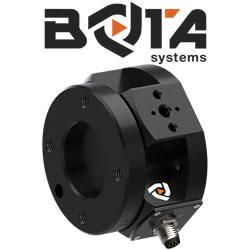As companies continue to integrate more automation into their warehouses and DCs, the need for intelligent sensors to monitor and guide that equipment in a very safe, efficient, and productive manner will also increase.
 Accommodating Market Volumes and Staying Competitive with Scalable Sensor Solutions
Accommodating Market Volumes and Staying Competitive with Scalable Sensor Solutions

Article from | SICK, Inc.
Scalable sensor solutions are key factor to dealing with current market and high volume
As companies continue to integrate more automation into their warehouses and DCs, the need for intelligent sensors to monitor and guide that equipment in a very safe, efficient, and productive manner will also increase.
With COVID putting most companies into “hurry up” mode on the automation front, issues like labor shortages, social distancing, and pressures to do more with less are all pushing more companies to explore their options right now.
“It’s very difficult to find enough people to get the volumes out the door that need to go out and e-commerce is literally blowing through the roof,” says Don DeLash, national sales manager, retail distribution, at SICK, Inc. “That’s not going away post-COVID. Everyone is used to ordering everything online now, and they’re just going to keep doing it.”
To keep up with this and other trends, companies need scalable solutions that grow along with them, and can also be scaled back as needed. Tom Bonucchi, sales manager, transport logistics, at SICK, Inc., says that’s where mobile platforms and intelligent sensors really prove their worth.
And because most companies have to handle one or more peak seasons during the course of a year, the autonomous or semi-autonomous platform’s scalability is a key selling point. With many companies now offering robotics-as-a-service (RaaS) arrangements, the equipment can be brought onsite or returned as needed.
“Similar to how you would hire temporary work, you can ‘hire’ temporary robots,” Bonucchi says. “If you have a fleet of 20 vehicles and need to scale to 30, there’s no learning curve for the additional 10 vehicles that you’re adding. They’re just programmed to do what the other 20 are already doing.”
Add intelligent sensors to the mix, and those mobile platforms become even smarter, safer, and more responsive. Combined, these attributes help companies create mobile platform fleets that help them operate in a very competitive, efficient manner.
“In light of the market and volumes that companies are dealing with—especially in the e-commerce world—they pretty much have to do this,” DeLash said. “Those that don’t are going to lose.”
Want to learn more about scalable sensor solutions? Contact a SICK representative today!
The content & opinions in this article are the author’s and do not necessarily represent the views of RoboticsTomorrow
Comments (0)
This post does not have any comments. Be the first to leave a comment below.
Featured Product


